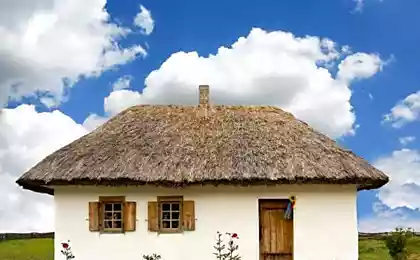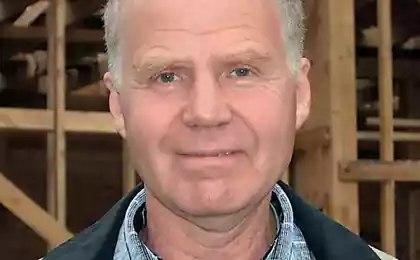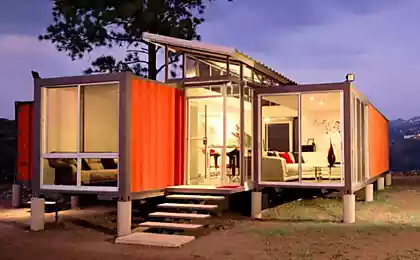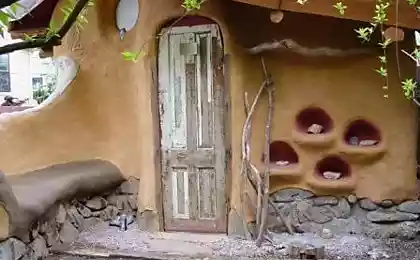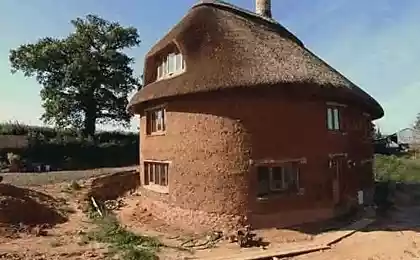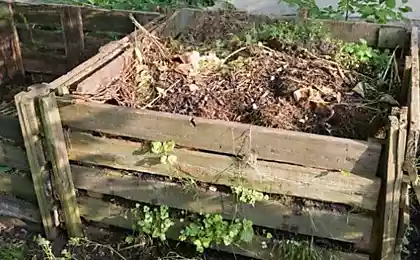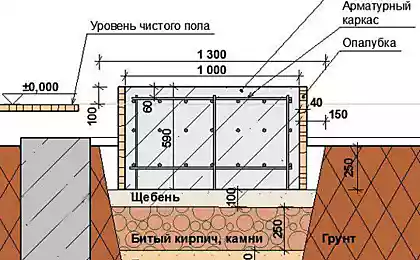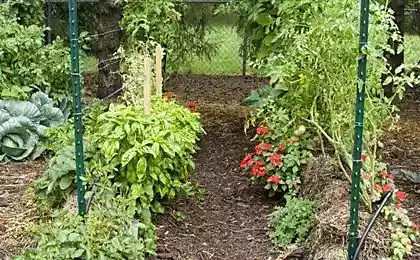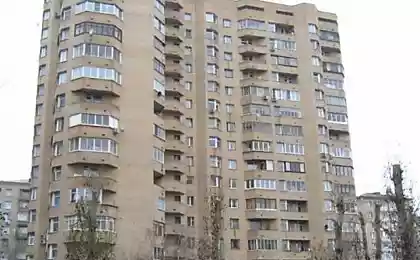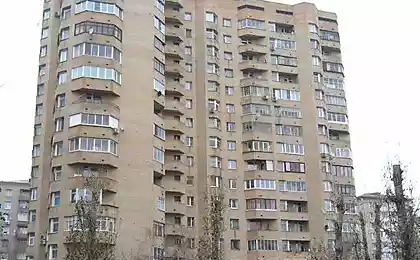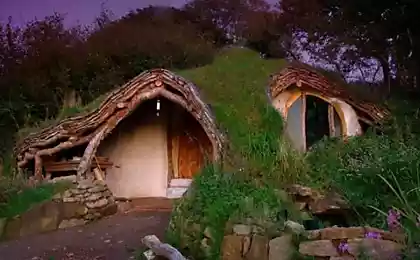520
3 disadvantage of the construction of a clay house by Ianto Evans
This small clay house was built in the summer of 2007 in Iowa.
Construction took 10 weeks, was made about 500 blocks of clay. In the kneading of clay, the cleanup, was attended by about 60 people.

Hap and Lin Moulinex, builders, experimenters and therefore their experiences will be especially important and interesting for each castroites. The first thing they went to the workshop to Ianto Evans, the famous American Builder of houses from clay and straw. The structure of the house took it from there.
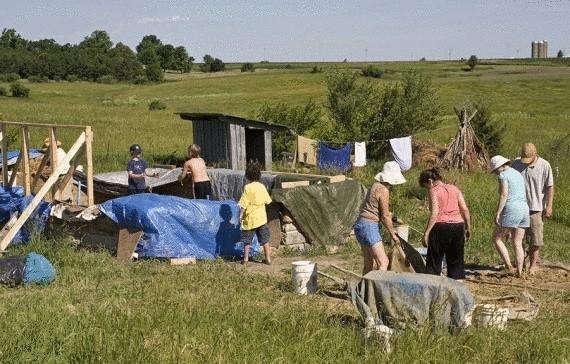
The clay blocks were made of clay, sand and straw, mixing all legs. The photo shows rain clouds. As it turned out, heavy rains have become a serious obstacle in the construction of the walls before they put the roof.

Roof used metalloprofil, as it is lightweight and collects water. Of all natural materials, metal roof has raised the most positive reviews.
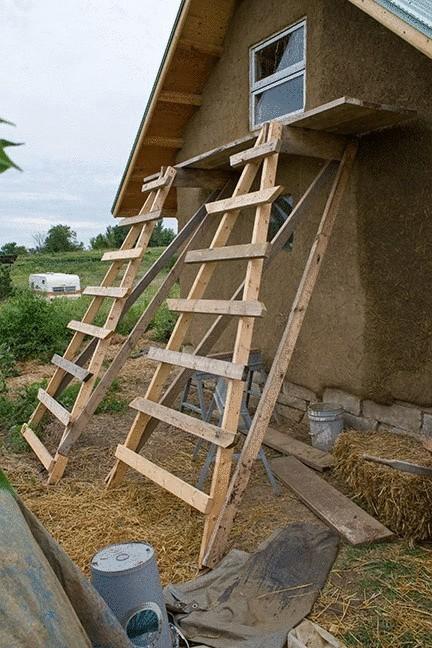
As the primary component for the outer plaster used cow dung.
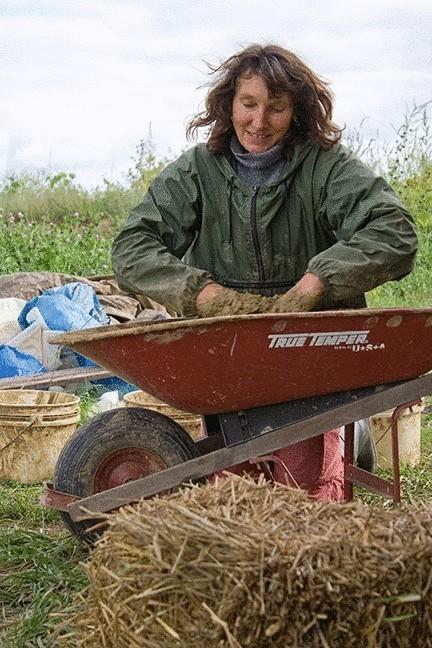
As the Central heating set the oven-stove donated by friends. Hep advises to keep the stove away from the clay exterior walls, as the heat from the stove can easily get out of the house through the walls.
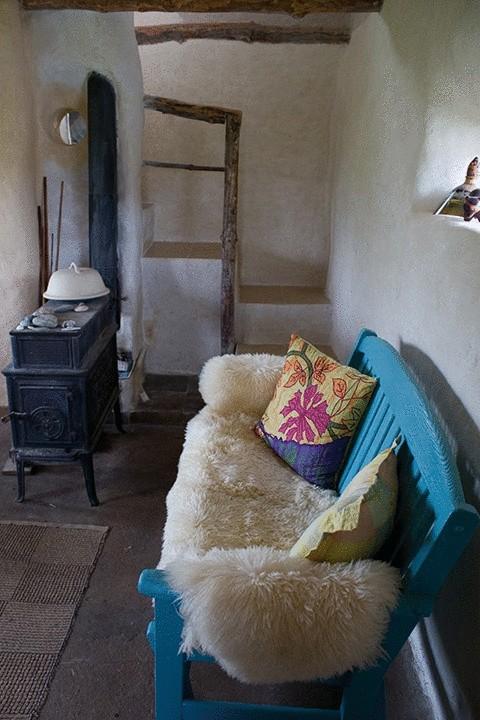
The kitchen was too small, but she mostly enjoys the summer kitchen.
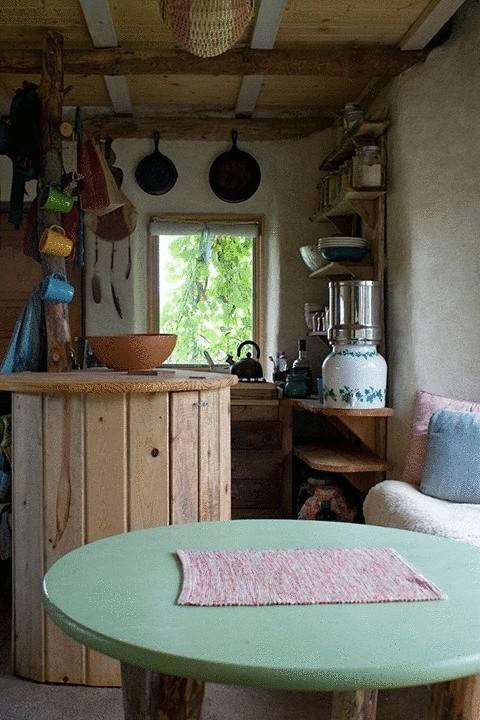
The warm and cozy place turned out to upstairs bedroom. In the summer it is easy to arrange a cool tent through the window and warm in winter naturally rises from the bottom. Large double bed very comfortable went under the bevel roof.
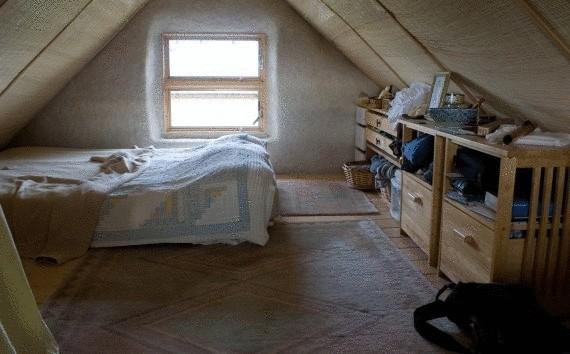
It took 7 years after the construction of the house and to make certain conclusions. Perhaps the main drawback of the clay house was the choice of climate zone, or rather chose the wrong material for cold climates. In the Northern latitudes clay difficult to tolerate dampness, slanting rains and in winter it is still cold.
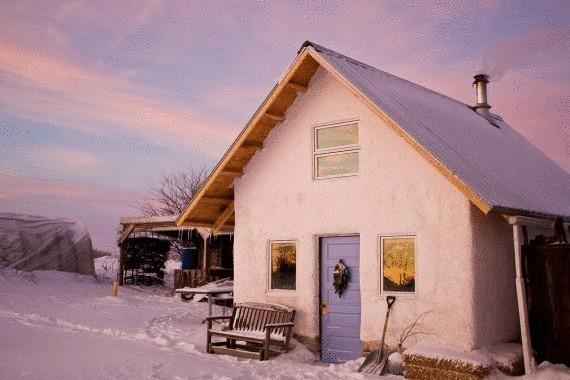
1. Window. For Evans at the openings for Windows are inserted wooden frames in which are inserted glass. But, according to Hep the cold climate requires good Windows! When he tried to do it in Iowa, he ran the condensate streams at the Windows on the mud wall.
2. Heating. In a cold climate, you need to do a full Underfloor heating. Perhaps a rocket stove with channels in the walls where it can provide a positive thermal mass, without losing its heat to the cold winter. For this reason we have the stove-couch.
Hep put it on the roof of solar collectors, which heat of about 1000 liters of water along the Northern wall to provide a warm winter night.
3. Complexity. Construction of mud houses, very time-consuming and costly process. From personal experience I would say that we used to have before 1940 clay blocks was made on Adobe small factories which then became brick-works. The blocks were brought to the construction site ready so quickly erected building. As our home was being built, which we eventually demolished. Otherwise, buildings would need to connect a lot of people, because the clay/mud bricks are very heavy and require a lot of time for drying. Especially in the rainy summer and wet weather.
In our latitudes, the most popular was the thatched house. As warmer and less time consuming. Come to this and Hep in the next result, he built a house of straw.
Construction took 10 weeks, was made about 500 blocks of clay. In the kneading of clay, the cleanup, was attended by about 60 people.

Hap and Lin Moulinex, builders, experimenters and therefore their experiences will be especially important and interesting for each castroites. The first thing they went to the workshop to Ianto Evans, the famous American Builder of houses from clay and straw. The structure of the house took it from there.

The clay blocks were made of clay, sand and straw, mixing all legs. The photo shows rain clouds. As it turned out, heavy rains have become a serious obstacle in the construction of the walls before they put the roof.

Roof used metalloprofil, as it is lightweight and collects water. Of all natural materials, metal roof has raised the most positive reviews.

As the primary component for the outer plaster used cow dung.

As the Central heating set the oven-stove donated by friends. Hep advises to keep the stove away from the clay exterior walls, as the heat from the stove can easily get out of the house through the walls.

The kitchen was too small, but she mostly enjoys the summer kitchen.

The warm and cozy place turned out to upstairs bedroom. In the summer it is easy to arrange a cool tent through the window and warm in winter naturally rises from the bottom. Large double bed very comfortable went under the bevel roof.

It took 7 years after the construction of the house and to make certain conclusions. Perhaps the main drawback of the clay house was the choice of climate zone, or rather chose the wrong material for cold climates. In the Northern latitudes clay difficult to tolerate dampness, slanting rains and in winter it is still cold.

1. Window. For Evans at the openings for Windows are inserted wooden frames in which are inserted glass. But, according to Hep the cold climate requires good Windows! When he tried to do it in Iowa, he ran the condensate streams at the Windows on the mud wall.
2. Heating. In a cold climate, you need to do a full Underfloor heating. Perhaps a rocket stove with channels in the walls where it can provide a positive thermal mass, without losing its heat to the cold winter. For this reason we have the stove-couch.
Hep put it on the roof of solar collectors, which heat of about 1000 liters of water along the Northern wall to provide a warm winter night.
3. Complexity. Construction of mud houses, very time-consuming and costly process. From personal experience I would say that we used to have before 1940 clay blocks was made on Adobe small factories which then became brick-works. The blocks were brought to the construction site ready so quickly erected building. As our home was being built, which we eventually demolished. Otherwise, buildings would need to connect a lot of people, because the clay/mud bricks are very heavy and require a lot of time for drying. Especially in the rainy summer and wet weather.
In our latitudes, the most popular was the thatched house. As warmer and less time consuming. Come to this and Hep in the next result, he built a house of straw.


